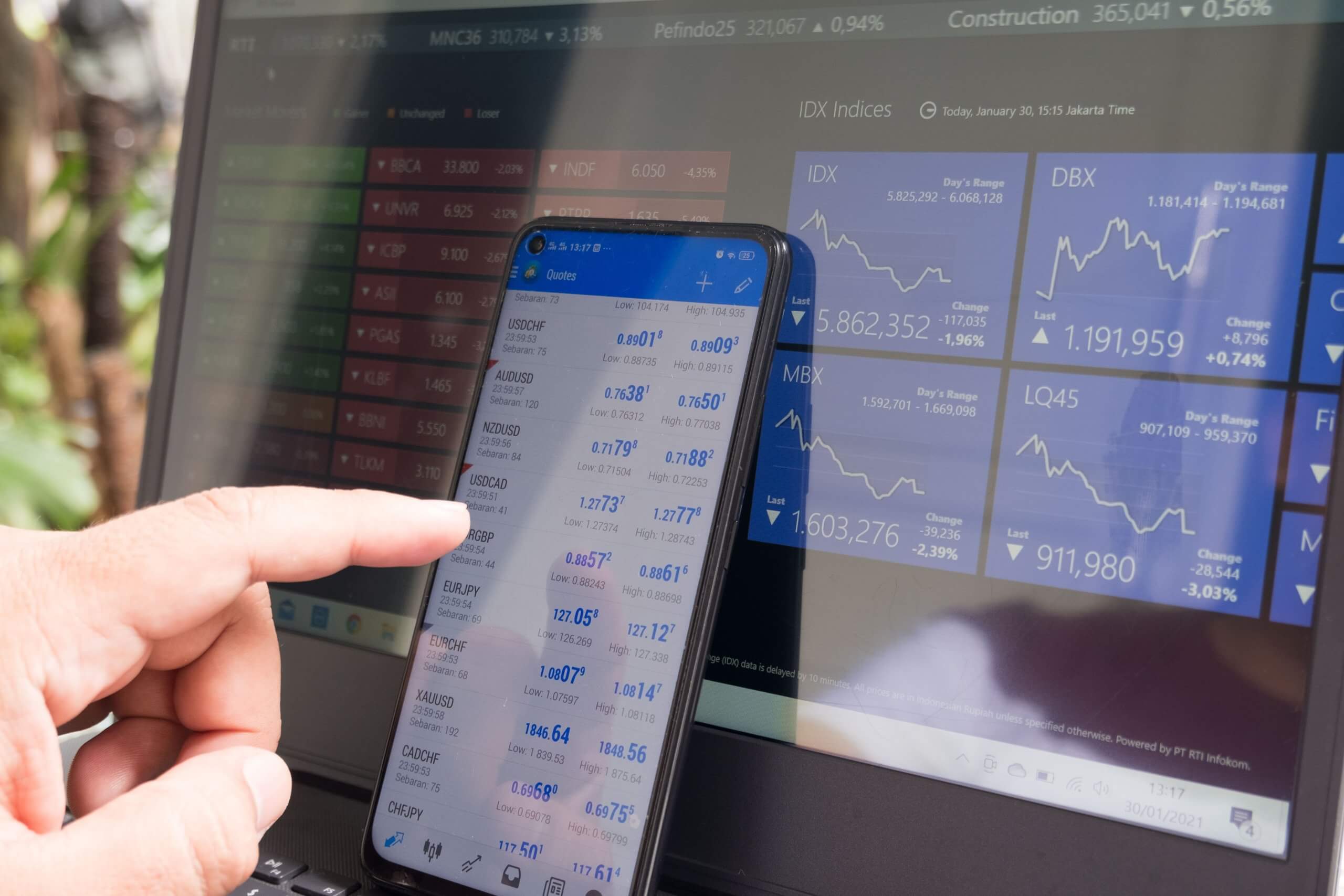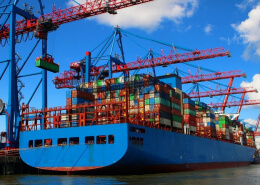A complete guide to business risk management
- All industries are subject to a range of risks, particularly financial services.
- Forex trading risk management is essential to becoming a successful forex trader.
- Businesses should implement risk maps to assess the likelihood of risks and cross-reference against company objectives.
- Risks must be continuously reviewed to establish which risk management strategies need to be altered and those which are no longer relevant.
Risks are present within every industry and have the potential to create catastrophic consequences if not managed accordingly. Although all businesses are subject to a degree of risk, it is particularly prominent within the financial services industry.
Risk management is described as evaluating events, using tools and strategies to assess their consequences on businesses. Companies that implement a solid risk management strategy are better prepared for events that could cause potential volatility and can deal with them cost-effectively.
Identifying the risks within forex trading can be a complex topic but is essential for those in the industry to master when becoming a lucrative FX trader. The success of a Forex trader is measured by the risk involved in making a return, using the Sharpe Ratio, which is calculated by dividing returns by the volatility of the return.
The article covers why risk management is imperative across businesses, how to measure risks, and how risk management can be better implemented using relevant tools.

The business risk management process
Risk management should be an integral part of any business, with all industries vulnerable to potential volatility. A concrete risk management strategy helps companies identify and tackle your industry’s potential issues and increase your chances of meeting your business objectives.
There are many elements to the risk management process, which consists of identifying risks, the likelihood of risks occurring, learning how to respond to threats, establishing a risk management strategy and monitoring the effectiveness of your approaches.
Implementing a successful risk management process allows your business to improve decision-making, allocate your capital, prevent severe financial losses, and stay within budgets.
Risk management becomes even more crucial during periods of business transformation, which has become a more regular occurrence during COVID-19, with many making quick pivots to adapt to the new business landscape.
Within financial services, examples of risky moves could be launching a new product or entering into new markets. There is a strong chance that competitors could follow you into these new markets or advances in technology that could nullify your product. With every significant business decision, it’s crucial to consider all circumstances that could transpire as a result.
The risk categories
Various types of risks could impact your company, and all should be considered when reviewing your business operations.
- Strategic risks – Strategic risks can occur when a new competitor enters the market.
- Compliance risks – Compliance risks relate to the introduction of new legislation such as health and safety.
- Financial risks – Financial risks can include customer non-payments or interest rate charges which could impact business loans.
- Operational risks – Operational risks can relate to the breakdown or theft of company equipment.
Certain risks could also fall into multiple categories, such as data protection breaches that could come under operational and compliance risks. Other risk examples include environmental risks, employee risk management, employee safety and economic instability, which can significantly impact FX markets.
However, Forex traders carry their own specific set of risks including:
- Market risk – The risk of sudden changes in currency markets, which is the most common risk amongst Forex traders.
- Counterparty risk – The risk your broker will not return funds.
- Liquidity risk – The risk you will be unable to act on trades during opportune moments.
- Model risk – The risk that your analysis model does not represent reality and will result in a series of losses.
- Technological risk – The risk your computer will fail, preventing you from placing trades.
- Risk of ruin – The risk of destroying a singular account.
Strategic and compliance risks
Strategic risks are industry-specific and can arise from changes to acquisition activity, consumer demand, industry changes and development.
Compliance risks are linked to the need to conform with specific laws and regulations, impacting investors and customers. As a result, businesses must have a solid governance structure to ensure that these regulations are adhered to.
Businesses must also assess whether employment or health and safety regulations could impact expenses or alter company operations. Legislative changes could also affect the products sold by your business, as has been the case for tobacco industries.
For example, post-Brexit changes have seen stricter labelling imposed for food and drink companies when trading cross-border, which led to significant disruptions and confusion amongst the food and drink industry.

Financial and operational risks
Financial risks are related to the financial structure, transactions and financial systems of your business. Financial risk management involves the assessment of your business’s financial operations, including cash flow. For example, companies can be significantly impacted if they are too reliant on a particular client and fail to make payment.
Should this be the case, you may need to assess how you extend credit to new customers, establish what payments are outstanding, steps to recover funds and take out insurance to cover significant debts.
Financial risks should also consider external factors such as changes to interest rates and foreign exchange rates.
Amendments to interest rates will impact debt repayments and the affordability of your products and services in comparison to similar products sold abroad. Following last year’s boom in e-commerce, more consumers are buying internationally to secure the best product deals.
Operational risks are connected to your business’s administrative procedures such as recruitment, IT systems and supply chain.
Businesses must examine each of these operations and assess the individual risks of each category. For example, companies that rely on one particular supplier should evaluate how they could be impacted if that supplier went out of business.
Risks surrounding IT and data protection are becoming increasingly prominent across all businesses. As a result, robust measures must be in place to ensure customer data is not compromised and a disaster recovery strategy is put in place should your IT infrastructure come under attack. As a result, IT systems must be encrypted to safeguard customer data.
Evaluating risks
Risk evaluation allows businesses to assess the magnitude of risks and decide whether to take on the risk or minimise it by acting accordingly. Once all risks have been identified, it can be helpful to rank these in order of severity and the probability of each risk occurring.
These risks can then be cross-referenced against your business plan to establish which ones could most impact your business objectives. In some instances, the expense of preventing a particular risk could be so costly that it can make more sense not to take any action.
A risk map is a valuable risk management tool, helping businesses assess the likelihood of a risk occurring. Risks are ranked on a scale of one to ten, with ten being of primary importance to the company and one being least important. The risk map allows businesses to view the relationships between risks, measure their severity and plan what actions should be implemented to alleviate the risks.
Implementing risk management tools allows businesses to direct efforts towards the most prominent risks. In addition, risk management systems and controls will help companies assess the consequences of potentially volatile events, allowing them to sharpen processes and procedures should the event occur.
Risk prevention measures
Effective risk management comes down to implementing rigorous methods and processes to limit various threats to your business. For example, risk prevention methods could involve having substantial financial reserves to lessen the impact of potential cash flow issues or IT backup to combat a possible systems failure.
These risk prevention measures are often referred to as business continuity plans. Whilst it’s impossible to avoid all risks, these continuity plans can help diminish the impacts on your business.
Risk assessments will develop as your business expands or following internal or external changes. As a result, risk management processes should be reviewed continuously. Regular risk reviews will help establish new process developments and identify when specific functions are no longer necessary.
Implementing risk management
There are four ways of dealing with potential risks: acceptance, transference, reduction, and elimination.
For example, it can be prudent to accept risks if the cost of elimination remains too high. Transferring risk is a move often done with insurance, or threats could be reduced or eliminated by altering the way you produce a product.
Risk management is not an ad-hoc task and must be consistently reviewed in line with business expansion, economic and legislative changes. Continuous monitoring ensures that appropriate measures have been put in place and allows you to improve your risk management strategies.
Strategies should be outlined in a risk management policy, documenting your business’s risk appetite and management approach methods. In addition, companies can strengthen their risk management strategy by assigning responsibility to individual employees and keeping board members informed of new developments.
Choosing the right insurance
Choosing the right insurance can help diminish your business’ risks and effectively protect firms against risk-related financial losses. Relevant insurance will help protect your business following a high-risk event, providing financial compensation. However, it’s essential to bear in mind that some events cannot be covered by insurance, such as the decline of a company’s reputation.
Some insurance companies will not provide cover unless businesses provide evidence that risk is being managed accordingly. It’s best to speak with an insurance adviser regarding what evidence is required to ensure you can be sufficiently covered.
Some insurance products to consider include products liability insurance, Keyman insurance and group life assurance.
Liability insurance aims to provide compensation in connection to negligence or breach of duty.
Keyman insurance covers the financial costs of crucial personnel losses.
Some employers offer group life assurance as a benefit, paying out a lump sum to the family of a deceased employee.
As a Forex trader, a solid Forex risk management strategy should be at the forefront of every decision you make. Taking the above steps can help you to assess relevant risks and help to maximise returns continuously.












